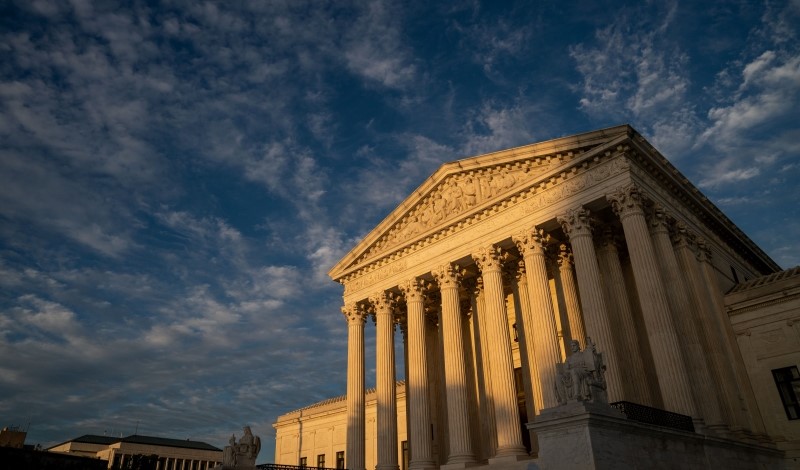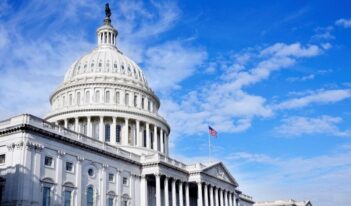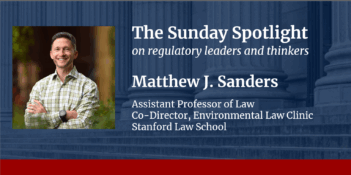
Scholar argues that civil penalties under environmental laws may survive Seventh Amendment challenges.
A 2024 Supreme Court case, Securities and Exchange Commission v. Jarkesy, held that the U.S. Securities and Exchange Commission (SEC)’s imposition of civil penalties in securities fraud adjudications violated the defendant’s right to a jury trial, which is guaranteed in federal court by the Seventh Amendment to the U.S. Constitution. If the SEC can no longer impose civil penalties in its own administrative enforcement actions, are there any agencies that can?
In a recent article, Robert L. Glicksman, a professor of environmental law at The George Washington University Law School, concludes that civil penalty regimes under certain environmental laws may “survive an attack on Seventh Amendment grounds” despite their similarities with the SEC’s statutory powers.
Glicksman criticizes Jarkesy for oversimplifying issues and treating precedents inconsistently. He argues that the Court failed to provide meaningful guidance to lower courts, leaving them to determine on a case-by-case basis which civil penalties are constitutionally permissible in administrative adjudications. Using the U.S. Environmental Protection Agency (EPA)’s civil penalty framework as an example, Glicksman examines how courts may address similar challenges in the wake of Jarkesy.
Glicksman starts by explaining how the SEC’s imposition of civil penalties implicated the Seventh Amendment right to a jury trial. The Amendment applies to “suits at common law,” which traditionally involve legal remedies, such as money damages, as opposed to equitable relief, such as injunctions. The Court held that the SEC’s civil penalty for securities fraud was a legal remedy, primarily because it served a punitive purpose. The Court found the nature of the remedy to be “all but dispositive” of the right to a jury trial. The Court further confirmed its finding from the “close relationship between federal securities fraud and common law fraud.”
Glicksman, however, finds that the Court’s reliance on the nature of the remedy was overly simplistic. He argues that several other factors—such as the forum, the nature of the power exercised by the agency, and the nature of the parties involved—also determine whether the right to a jury trial attaches. Glicksman points to Justice Sonia Sotomayor’s dissent, which read “suits at common law” to apply only to judicial proceedings, and not to administrative proceedings. Glicksman faults the majority for, among other things, failing to address this reading. In future cases, Glicksman predicts that courts will conclude that the Seventh Amendment applies to civil penalty actions based solely on the nature of the remedy.
The second issue the Court addressed was whether the “public rights” exception applied. Under the public rights doctrine, agencies can adjudicate cases outside of federal court without a jury if the matter involves public rather than private rights. The Court determined that the “hallmark” criterion for whether an action involves public rights is how similar it is to the “nature of an action at common law.” The Court held that the SEC enforcement action was “a common law suit in all but name” because it involved the same conduct, same terms of art, and similar legal principles as a common law fraud action.
Glicksman criticizes the Court’s selective reliance on precedents, noting that the Court ignored cases in which the government’s mere involvement as a party triggered the public rights exception. Glicksman says that historically, suits involving the government and a private party were categorically considered public rights cases. The Court ruled, however, that “what matters is the substance of the suit, not where it is brought, who brings it[, o]r how it is labeled.” Glicksman argues that, moving forward, courts applying Jarkesy must try to determine whether “in some amorphous way,” the statutory claim before them resembles a common law cause of action to which the right to a jury trial attaches.
Despite this uncertainty, Glicksman believes that civil penalties under environmental laws may survive constitutional challenges. He explains that the critical difference lies in the connection between these environmental statutes and their common law analogs.
He reasons that public nuisance is likely the closest common law analog to claims brought under environmental statutes such as the Clean Water Act and Clean Air Act. The standards under these statutes, however, are “light years away” from the vague public nuisance common law, according to Glicksman. As such, despite the similarities between the SEC and EPA enforcement regimes, Glicksman predicts that EPA’s civil penalty regime “should survive an attack on Seventh Amendment grounds.”
Although Glicksman concludes that the Court created a legal landscape fraught with uncertainty, he expresses optimism that civil penalties in environmental law might withstand constitutional scrutiny due to the distinct nature of the statutory regimes and the public rights they protect.



